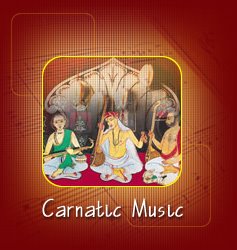Indian MUSIC
Indian Music, the music of the Indian subcontinent. Just as there is no such language as Indian, but instead many hundreds of languages, with over a dozen considered major, so there is no single entity as Indian music. The range of musical styles and traditions in the subcontinent of South Asia, which comprises modern India, Pakistan, Bangladesh, Nepal, and Sri Lanka, is in proportion to the vastness of the geographical area and the density of population. This is most obviously the case with folk and tribal music. Given that India is predominantly rural, it could be claimed that such categories of music are those of the majority. On the other hand, the rapid development of communications and wider access to the mass media have helped to create what is almost, despite the language differences, a pan-Indian popular music, recorded and disseminated electronically. This emanates from the Indian film industry, the largest in the world, of which the products tend to adhere to formulaic devices, including many songs and dances. Film songs are heard all over India, in city streets and even in remote villages, and have also become one of the country's major cultural exports. It is a remarkably eclectic genre, borrowing freely from other Indian musics and popular musics from around the world, including some Western harmonic procedures. Otherwise Indian music is characterized by solo or unison melodies, very often over a drone, be it heard or implied, and rhythmic cycles. It is unequalled in its variety of melodic and rhythmic types and of musical instruments.
What is usually understood by the term Indian music refers to the classical tradition, based on the melodic system of raga and the rhythmic system of tala. This music is traced back thousands of years to the vedic chants of the early Hindu settlers, though it has reached its present form in the last four or five hundred years. Its development over almost the last two thousand years has been documented in a series of theoretical treatises, mostly written in Sanskrit, which enhance its status, whether they elucidate or obscure its actual practices. The word commonly found in Sanskrit for music is sangit, which denotes the primacy of vocal music, with instrumental music largely derived from it, and dance as a further integral element. Although it is not expected that musicians will be dancers, it is still vital that dancers be musicians. Muslim invasions and the establishment of the Delhi Sultanate in the 13th century and the Mughal Empire in the 16th century in the northern part of the subcontinent greatly contributed to a bifurcation of classical music by the 16th century into a northern tradition of Hindustani music, and a southern tradition of Carnatic music, and a gradual shift in both from religious application to a courtly entertainment. Both retain their basis in raga and tala and share many other general features, though they are sufficiently different in detail to necessitate separate training. Since independence from British rule in 1947 and the demise of the princely courts, Indian music has moved to the concert hall, the recording studio, and the world stage.



1 comment:
Admiring the time and effort you put into your blog and detailed information you offer!..
জীবন রে লিরিক্স
প্রেমে পড়া বারণ লিরিক্স
তুই ছুঁলি যখন লিরিক্স
কে তুই বল লিরিক্স
Post a Comment